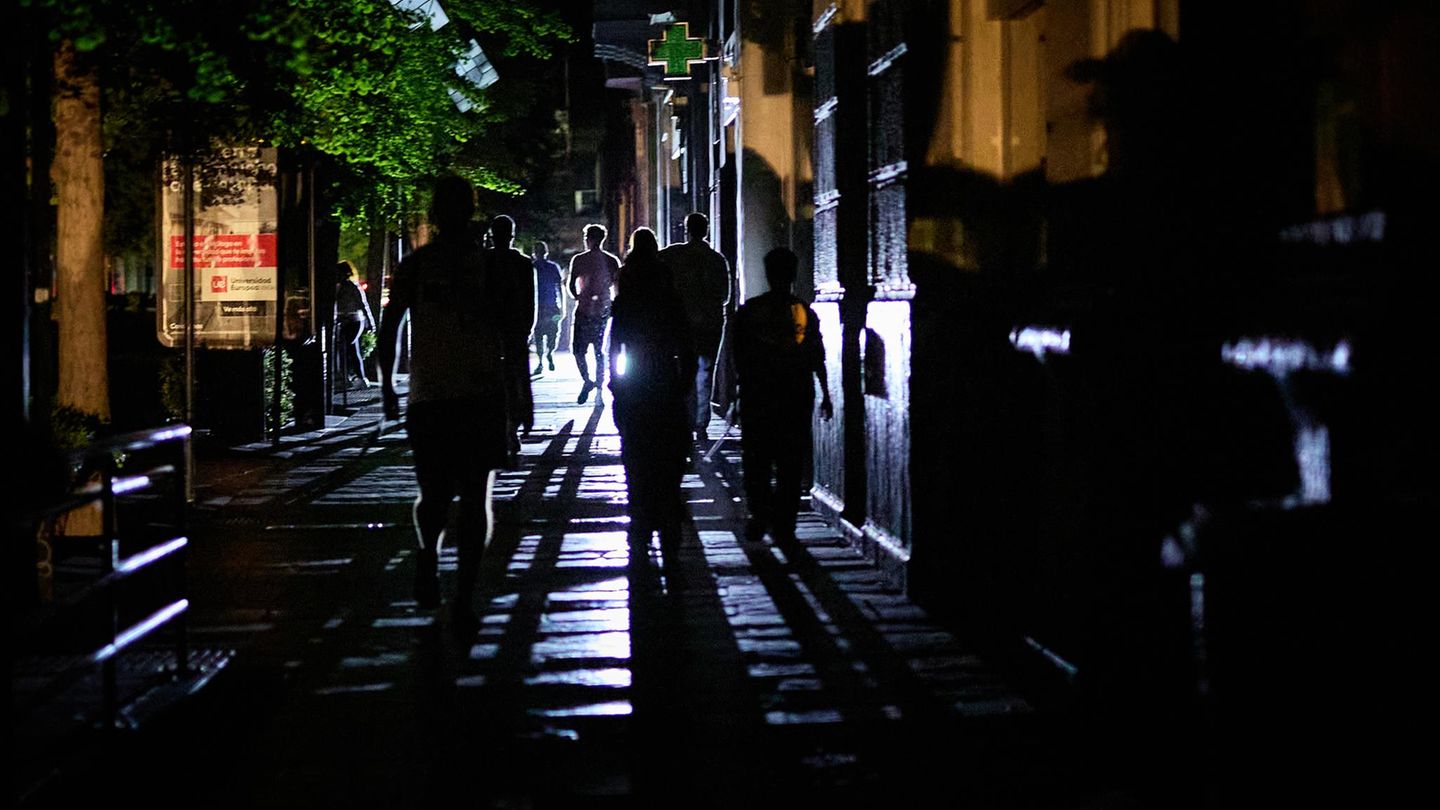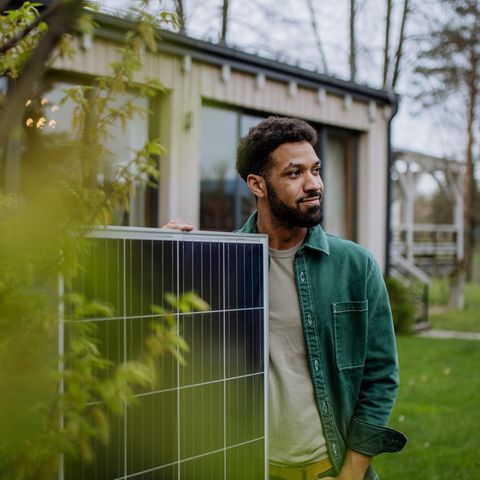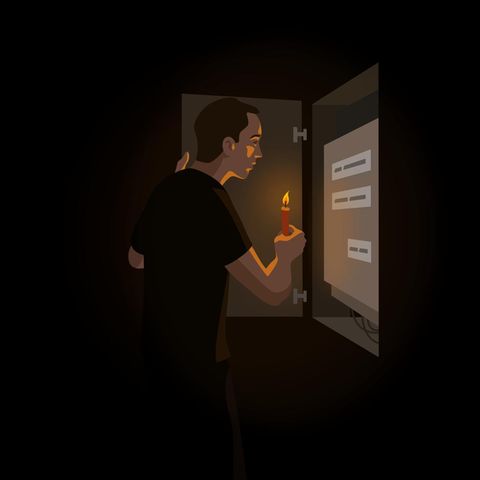Spain
Blackout: Not solar systems, the network operators were to blame
Copy the current link
Add to the memorial list
The blackout in Spain was avoidable, explains the government there. The solar energy or cyber attacks are not to blame. But that’s not the last word yet.
At half past twelve, the current is 33 seconds on the entire Iberian Peninsula: trains and elevators get stuck, traffic lights and the Internet fail. The blackout on April 28th shocked Spaniards and Portuguese – and also showed the rest of Europe how dependent we are dependent on the electricity. It took until early morning for the country to have completely electricity again.
Of course, the question quickly arose: who or what was the fault of the power failure? In Madrid yesterday, the responsible Vice Prime Minister and Environment Minister Sara Aageen presented the government’s official report seven weeks after the accident.
Too much solar power? Or even a cyber attack?
A much -made guess was that the power grid was unable to record the quantities of solar power on this sunny day. Another assumption: a cyber attack is to blame. From the point of view of the Spanish government, both are wrong. Apparently the misfortune was also avoidable. There was no individual mistake, the Environment Minister Sara Aages (non -party), but a chain of failures and mistakes that would have led to blackout.
To understand how the power failure came, you have to understand how the power grid works. It doesn’t just flow a constant amount of electricity through the network. There is a shower in the morning, coffee cooked, at some point the air conditioning systems start. Production is raised in the companies in the morning, then a break at noon. On the other hand, electricity production fluctuates because the sun sometimes shines more. The same applies to the wind. Other power plants, such as nuclear power plants, always tend to produce a constant amount, no matter how much is decreased.
To compensate, there are certain power plants that are regulated all the time to keep demand and supply of electricity in balance. These power plants in their generators can also absorb electricity within certain limits to compensate for increased tensions on the network. The flywheels in the generators of all power plants revolve around 50 revolutions per second (50 Hertz). This is how you stabilize the power grid.
Only nine power plants should secure the network
On the day of the blackout, ten such power plants with synchronous generators were available in Spain to keep the network stable. The government report criticizes that particularly few. The lowest number of the year up to that point. It turned out the evening before that one of the ten power plants did not work. However, no replacement was requested.
Advertisement
From shortly after twelve o’clock, unusually slow fluctuations in the Spanish power grid were found. They arise when the generators of the power plants no longer vibrate in harmony. This was compensated for, among other things by throttling the connection to the power grid to France.
At 12.16 and 12.19 p.m. further such low -frequency fluctuations occurred. This time they were felt throughout Europe. Again the Spanish network operator performed countermeasures.
A problem solved, one tightened
The problem: the measures each increase the voltage in the power grid, i.e. create new problems. It was also overvoltage that finally provoked the blackout. After the second counter -measure, the network operator opened that it could be tight. A further power plant was requested to stabilize the network. That took an hour and a half to get over.
But it was too late for that. Because just a quarter of an hour later, at 12.32 p.m., the tension suddenly increased quickly and continuously due to the previous events. If the voltage in the power grid is clearly too high, this means that the normal power generators automatically switch off for protection. And that was exactly what happened: within 21 seconds, generation systems in Granada, Badajoz and other provinces automatically went off the network. This triggered a chain reaction on the Iberian Peninsula, and the European network also separated for its own protection of Spain. After only 12 more seconds, the electricity was out on the entire Iberian Peninsula.
Network operator is to blame for the blackout
The government report now raises serious allegations against the network operator Red Eléctrica and various power plant operators in its report. “There were no capacities for voltage regulation, either because they were not sufficiently programmed or because the programmed capacities did not meet the regulations. Or a combination of both,” said Ecology Minister Sara Aages on Tuesday on RTVE, public television. To then free himself from guilt. “However, what we can say with certainty is that it was not due to a deficiency in the country, because there were enough power plants to meet demand.”
The poor planning and programming in power plant and network operators is responsible. Some systems switched off, although the voltage in their region was still in the permissible area. Particularly bad: Some of the power plants that should actually stabilize the network did not behave according to the requirements. They also created tension instead of taking them off the network – and thus accelerated the collapse.
The Spanish Association of Electricity Works Aelec also criticized the Spanish network operator Red Eléctrica. “It was decided to control the tension with a limited synchronized capacity and an unbalanced geographical distribution, which the system brought into a precarious situation,” said the association according to RTVE. Say: If more power plants were available that would have been better distributed across the country, the blackout could have been avoided.
Not the last word yet
But it is still unclear whether the last word about the expiry of the blackout is still unclear. Because the European Association of Transmittent Network operators Dauseno-E has not yet commented. He has the order to monitor the security of the European network, and its examination of the blackout of April 28th is still running. There are also three representatives of the German Federal Network Agency in the Commission.
Only three weeks ago with the Minister Aageese that they still not received all the requested data on the power failure from the Spanish energy companies. In particular, not from smaller network operators and from power plant operators – and asked for administrative assistance. The Federal Network Agency wanted to star do not comment on the ongoing investigations by the European transmission system operators.
New technology against the blackout
Meanwhile, the Spanish government has left the analysis behind and already wants to get measures to make its power grid safer: more funds for the control of overvoltages, but also better surveillance of the power plants and network operators. In addition, one wants to significantly increase the connection with overland lines to the rest of Europe. Because unlike Spain, the fluctuations in the network frequency in the rest of Europe were easy to cushion – simply because the network is much larger and more powerful.
After all, Spain wants to invest in modern technology so that renewable energies can keep the network stable. What is meant is the use of batteries for storing tension tips and the so -called “network -related inverter” on batteries and solar cells. So far, the inverters, for example, have been connected to the network with which solar cells are connected. The new variant, like a power plant generator, could keep the network stable.
Source: Stern






